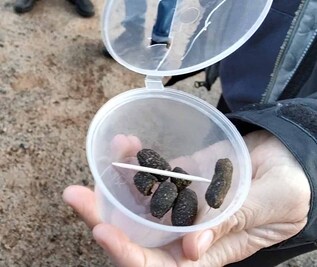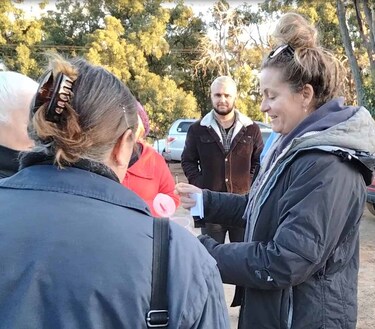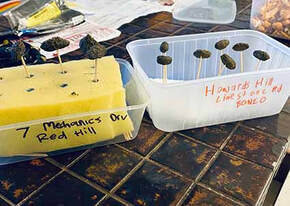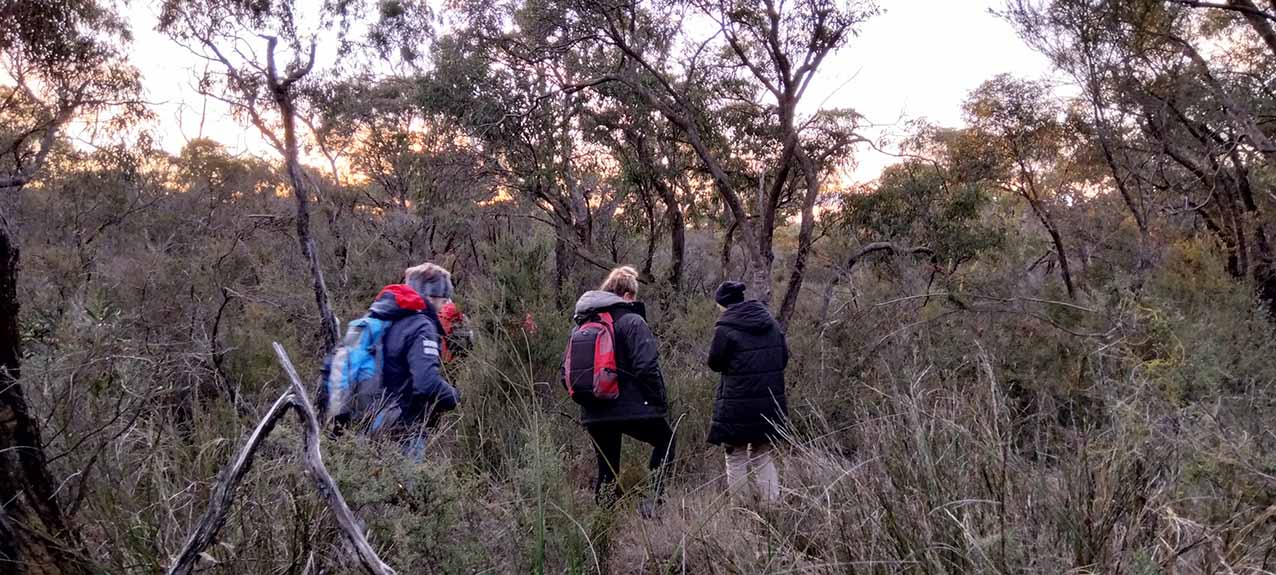
PEOPLE sniff many strange things on a Saturday night and we are sniffing a koala poo on a toothpick. The oblong pellet smells faintly like eucalyptus oil. We sniff a possum poo as well, because we need to know how to tell them apart. The possum poo is the same oblong shape but slightly larger, rougher and less eucalyptusy.
“We” are a team of 20 or so citizen scientists, so called by researcher Kelly Smith, mostly members of the Save Western Port Woodlands group, and we’re about to embark on a night search for koalas and koala poo in Adams Creek Nature Conservation Reserve, between Nyora and Lang Lang,
 Kelly Smith introduces us to koala poo hunting
Kelly Smith introduces us to koala poo hunting As far as scientists know, Victoria’s only non-French Island koala population is found on the south-eastern edge of the Strzelecki Ranges, near Yarram, and there are only about 1500 of them.
Kelly, an Honours student at Federation University, doesn’t believe it. “They just assumed the other koalas were extinct and that the koalas in Victoria are all inbred translocated koalas. That’s when they found the koalas in the Strzeleckis. You can’t tell me that no other koalas survived in the whole of Victoria.”
Any samples we find tonight will be sent for DNA analysis to determine whether they are part of the original population. "If they are, it would be massive!," Kelly says. "Because they’re an original population they’re much higher in genetic diversity so they are better able to deal with disease and other challenges.”
Two days ago Kelly and a team of helpers found three koala scat samples in the Grantville Nature Conservation. A passer by reported seeing another two koalas, and a team of walkers spotted another in the reserve a night earlier.
The sightings are significant as koalas, once prolific in the woodlands, have rarely been sighted in recent years. Now the search has shifted to the northern end of the woodlands.
Tonight’s searchers include locals and keen naturalist/photographers Dave and Jackie Newman, who know this reserve like their own backyard. They’ve heard koalas but never yet seen them.
“I never look for koalas,” Kelly says. “I just look for their trees. Any tree that looks like it’s been eaten, that’s straggly, it’s been eaten by something, either a possum or a koala.”
We’re each issued with a plastic container with toothpicks to pick up the poo so we don’t contaminate it. It’s a big reserve, so we break up into four teams for the search. Dave and Jackie are leading one team; Tim Herring another. Another team heads off to the west. I tag along with Kelly’s team.
Really? How embarrassing.
The dense undergrowth makes the search for poo pellets difficult. It’s pure bush bashing and once night has fallen we concentrate on trees hanging over the deep sand track, searching beneath anything that looks as if it’s been nibbled. Lots of kangaroo and wombat poo but nothing else.
Later we learn that Dave and Jackie’s team have been lucky enough to see 15 Krefft’s gliders during their walk. Watching one glide from a tree, someone described it as "like a flying handkerchief". But they are empty handed on the koala front too.
Just because we didn’t find koalas doesn’t mean they not there, says Kelly. Since she started her research project, she has discovered koalas living behind her place at Arthurs Seat, on the Mornington Peninsula. She’s never seen them but she regularly finds their poo. Not the Strzelecki population, unfortunately, but she lives in hope.

Kelly has asked us to keep an eye out for koalas in our local area, and to collect fresh poo if we find it.
Use a toothpick to pick up scat and stand it upright in some foam in a takeaway container. Keep the container open and dry in a dark room such as a laundry for no more than a week.
Contact Kelly on 0432 530 443 or [email protected] or send samples express post to Cassey Briggs, c/o Brittany Wood, Federation University, 1 Northways Rd, Churchill VIC 3841 within a week.
